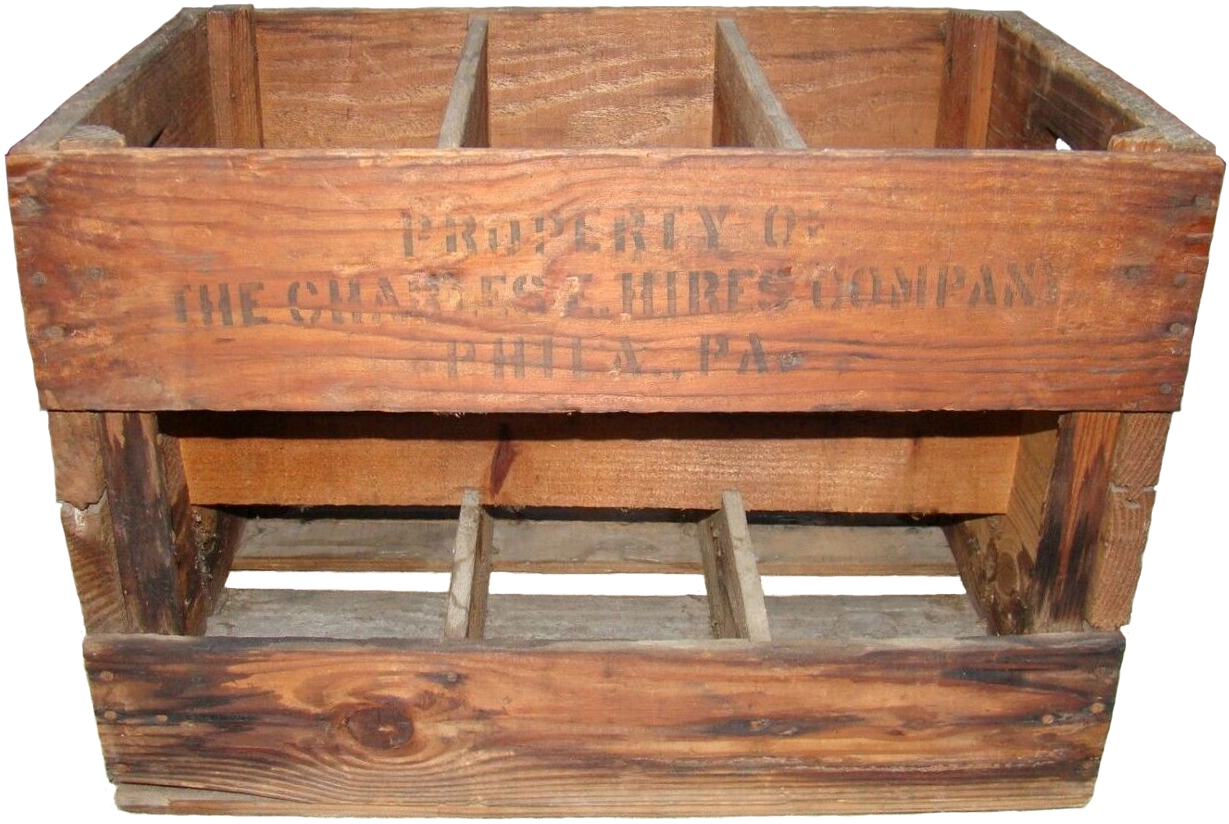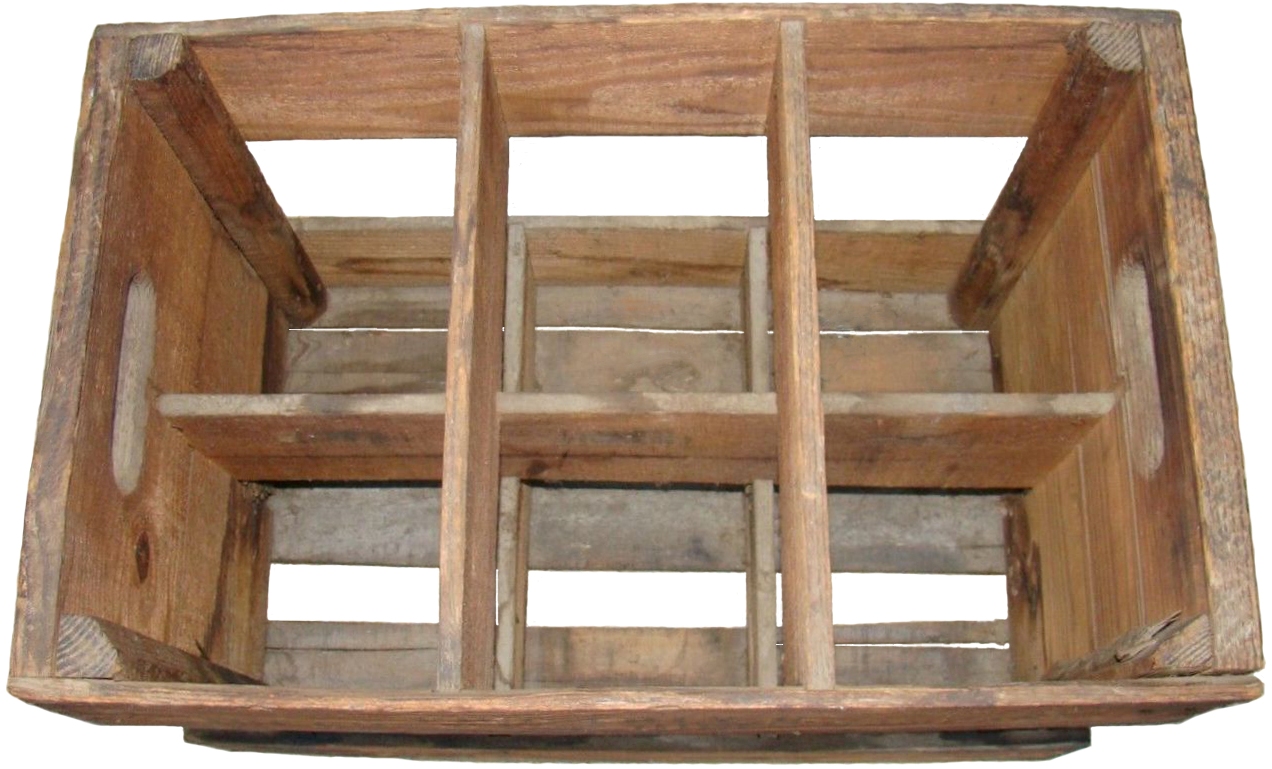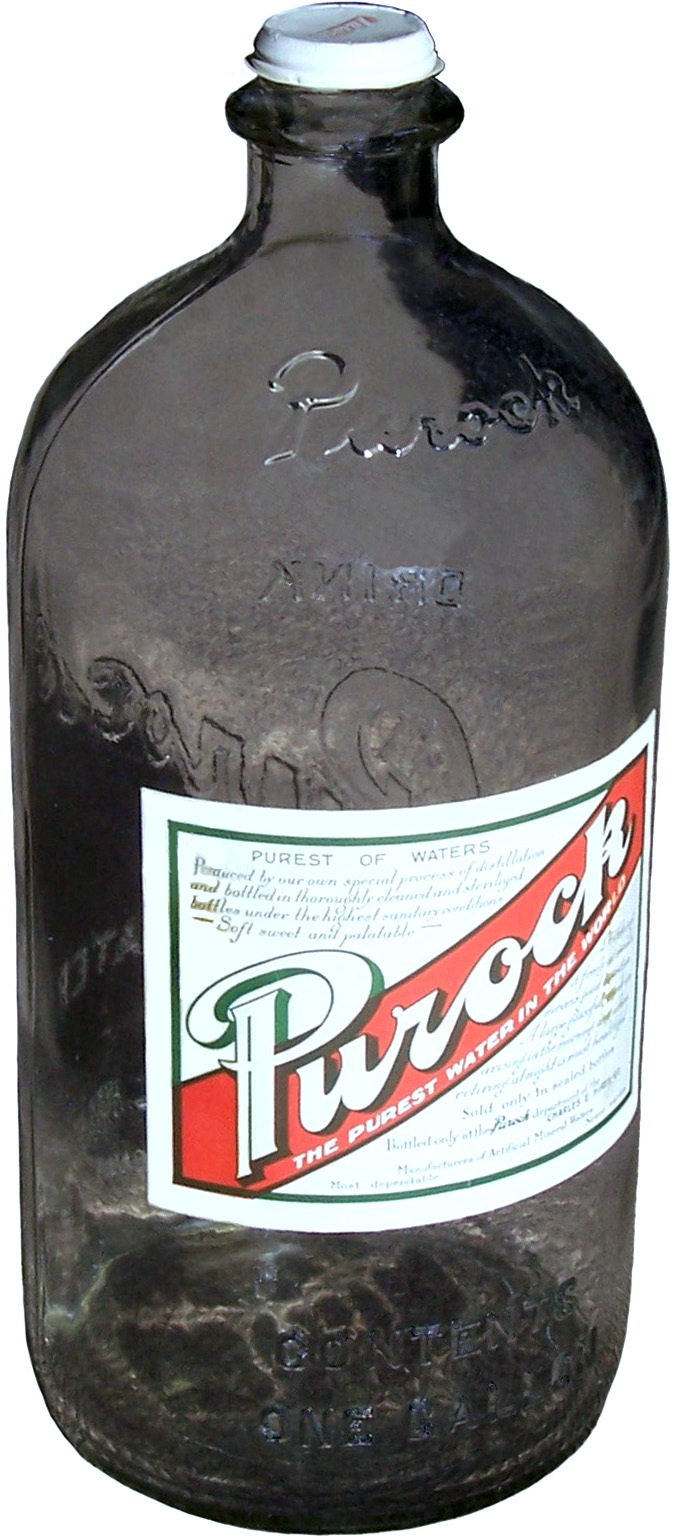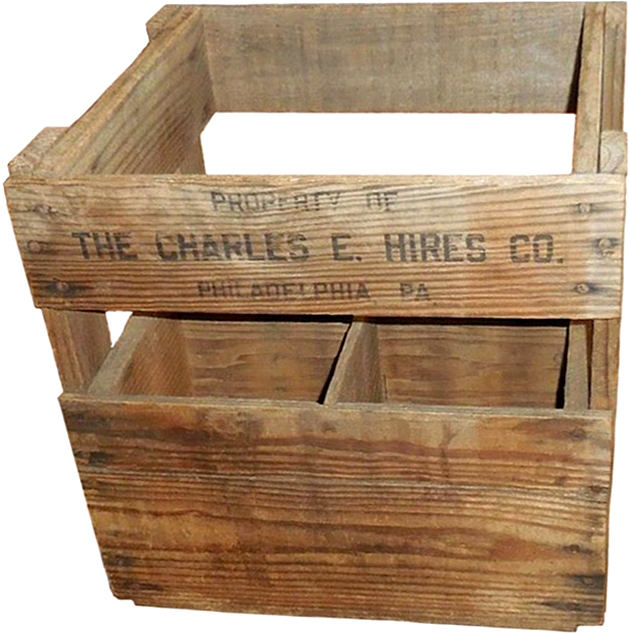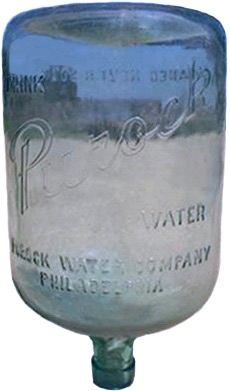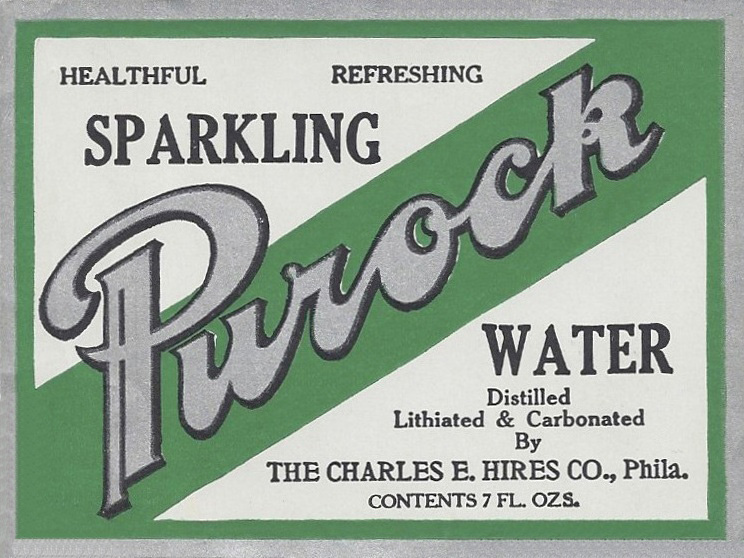1925
IT HAPPENED IN…1925
Economic prosperity initiated a significant drop
in labor union membership.
John T. Scopes was convicted for teaching the
theory of evolution in violation of Tennessee state law and fined
$100 at the Scopes monkey trial.
General Motors introduced a credit system for
purchasing vehicles.
The first U.S. “motel” opened in San Luis Obispo,
California.
Sears, Roebuck & Company opened their first
retail store.
Refrigerator sales hit 75,000 units.
Newly introduced products and inventions included
dry ice, embossed inlaid linoleum, deep freeze process for cooked
foods, synthetic rubber, and masking tape.
New magazines unlike
any others published before sought to keep up with the fast pace of
post-WWI life, including
Reader’s Digest, Time,
The New Yorker, and
Cosmopolitan.
The Grand Ole Opry one hour radio program began.
Clicquot Club Ginger Ale was advertised on the “Clicquot
Club Eskimos” radio program.
South Carolina enacted a 1¢ per bottle soft drink
tax.
Many styles of fancy bottles for branded soft
drinks were patented during the 1920s.
The Sodamat, an early automatic soft drink
vending machine, dispensed single cups.
7,326 U.S. soft drink bottling plants were in
operation. Per capita
consumption was 44.1 bottles.
(Figure 1925-01, tin sign,
20.0” x 6.0”)
This lithographed, paper poster features a young boy
riding in a two-wheeled cart that is being pulled by a rooster.
(Figure 1925-02, lithographed
paper poster, 18.0” x 24.0”)
The folded, paper "Full Directions for Making ROOTBEER" insert included with cartons of Hires Household Extract included a section advertising "The Hires Hand Capping Machine...A machine built to stand constant usage and last. Puts the cap on any crown bottle securely and tight. Can be successfully operated by any boy or girl. Requires very little pressure on the hand. By the use of the Hires Hand Capping Machine home-made Rootbeer made from Hires Household Extract can be put up in a commercial-looking package inexpensively in the home. The machine will be found a great convenience in putting up all kinds of home-made bottled beverages and preserves. Price, $4.50 delivered. It is part of a complete bottling outfit which enables any boy or girl to make Old Home-made Rootbeer from Hires Household Extract to SELL at a large profit...One boy on a golf course made $2.00 or $3.00 per day thru the summer months. A small restaurant keeper made over $2000.00 profit in one season." The accompanying illustrations showed a capping machine and this crown top bottle:
(Figure 1925-03, crockery crown top bottle
with stenciled label, 7.0" tall)
(Figure 1925-03, matching crown cap for the
crockery crown top bottle)
(Figure 1925-04, lamp with
cast iron legs and milk glass globe)
The original artwork for this sign was drawn by
John Bradshaw Crandell, an American artist and illustrator who produced
numerous magazine covers and was particularly well-known for his
portraits of female movie stars.
(Figure 1925-05, lithographed,
cardboard sign, 8.0” x 11.0”)
Continuing the shift away from advertising featuring the Hires Boy is
this 8.0" x 10.0" sign featuring a flapper girl.
The artwork was also drawn by Bradshaw Crandell.
(Figure 1925-06, tin over
cardboard sign, courtesy of Mike Godown)
The U.S. Printing and Lithograph Company in New York City produced this lithographed, cardboard bottle topper.
(Figure 1925-07, lithographed,
cardboard bottle topper, courtesy of Mike Godown)
The 1925 date pad is missing from this cardboard wall calendar. Entitled "Beauties," the beautiful young woman and red roses were drawn by J. Knowles Hare, a noted magazine cover and calendar illustrator.
(Figure 1925-07.5,
cardboard calendar, 19.875" x 13.0")
This fountain glass is etched “Enjoy Hires Nature’s
Delicious Drink.”
(Figure 1925-08, clear
fountain glass, 4.5” high, 2.5” diameter)
(Figure 1925-09, embossed tin
sign, 24.0” x 44.0”)
(Figure 1925-10, die-cut,
cardboard hanger, 8.0” x 10.0”)
(Figure 1925-11, tin sign,
9.5” x 27.0”)
(Figure 1925-11.5, tin sign,
9.5” x 27.5”)
(Figure 1925-12, tin sign,
20.0” x 28.0”, also produced in 3.25” x 9.25” size)
(Figure 1925-13, tin over
cardboard sign, 6.5” x 9.0”)
FOR YOUR PROFIT.
WE HAVE HAD THIS VALUABLE PIECE OF ADVERTISING
MATTED, carefully made of the very best materials, and, while oil
colors fade after long exposure to the direct rays of the sun, the
colors used on this sign insure the longest wear possible.
With proper use this sign will pay you and us
large sales dividends.
PLEASE PUT IT UP AT ONCE FOR OUR MUTUAL BENEFIT.
KEEP IT CLEAN.
Wipe it occasionally with a damp cloth and dry with a soft,
dry cloth. A polishing
oil will restore brilliancy, even when the sign is old.
WE EARNESTLY BESPEAK YOUR CARE AND CO-OPERATION
IN USING THIS SIGN TO OUR JOINT ADVANTAGE.
FORM NO. 105
(Figure 1925-14, metal bottle
opener)
The ice pick end of this metal bottle opener is debossed "PAT. 1-26-12" on both sides.
(Figure 1925-15, combination bottle
opener and ice pick)
The illustration for this 31.0" x 41.0" cardboard sign was drawn by
Gene Pressler, a New York City artist known for Art Deco style
calendars, magazine covers, and pin-up illustrations.
The Brett Lithographing Company of Long Island City, New York
produced the sign for Hires. A 16.0" x 20.0"
(Figure 1925-16, cardboard
sign, 31.0” x 41.0”)
(Figure 1925-17, tin sign,
10.0” x 28.0”)
(Figure 1925-18, embossed tin sign, 5.0” x 14.0”)
(Figure 1925-19, embossed tin
tacker, 9.5” x 27.5”)
This similar sign features a crown top bottle bearing a gold medals paper label.
(Figure 1925-19.5 embossed tin tacker, 9.625” x 27.625”)
William B. Keller published this opinion in the June 1925 issue of
National Bottlers Gazette:
Every Business – except the bottling business – has a
variety of prices governing the sale of its products.
It is properly so.
But the bottling business, with the false aid of many of the syrup
companies, has ignominiously settled down to the universal 5¢ drink – in
which there is absolutely no profit.
That is why the trade is kept in poverty straits.
Why shouldn’t a bottler lift himself out of his trade rut, and,
develop a Better Beverage and sell it at a price to retail at 10¢…It
would help him in many ways.
This suggestion is offered in good faith: Develop a Better
Beverage and charge accordingly.
There are hundreds of cases where this is being done
successfully. Why not you,
Mr. Bottler? Think it over.
Click on the next image and note the many details in this real photo postcard. The large Hires sign in the foreground advertised "Tibben & Higman's Refreshment Stand." Also visible is a large Orange Crush banner on the far right, a freestanding Ice Cold Coca-Cola sign, an Orange Crush sign next to the posing customers, a Model T, a bicycle, and gasoline pumps at the service station on the far left. This card was published by The Dragner-Nyvall Company, College Point, Long Island, New York.
(Figure 1925-19.8, real photo postcard)
Vendors used metal carriers to serve ice cold bottles
of Hires Root Beer at ball games and other events.
(Figure 1925-20, metal vendor carrier)
Hires’ crown caps were updated during 1925 with the “i” in the word Hires
changed from a slanted top to a flat top, and the words “Root Beer”
added.
(Figure 1925-21, updated crown cap with flat
“i” in the word Hires)
Considerable debate has surrounded whether to include this embossed, tin, lithographed sign as an authentic 1925 Hires sign, or as a fantasy/fake item that has been "aged" to appear old. The posted image shows the sign as found with no retouching, including what appears to be a bullet hole adjacent to the H. The sign's coloring and lettering font are identical to those used for the 1925 crown cap illustrated as Figure 1925-21 above. Concerns arise about the sign's authenticity, however, when one notes that neither the front nor back of the sign bear a Hires item number. A manufacturing oversight perhaps, but nonetheless very unusual. Also, the scratches thru the black lettering reveal a turquoise background, while scratches thru the yellow paint show no turquoise coloring.
(Figure 1925-21.5, embossed, tin,
lithographed sign, 6.0" x 9.5")
This clear, crown top bottle has a pebble finish and
embossed gold medals on the shoulders.
The paper Hires Ginger Ale label indicates the bottle held 6.5
fluid ounces.
(Figure 1925-22, crown top, 7.5” tall)
The Henry Weinhard Company of Portland, Oregon
utilized this 6 ounce, aqua crown top bottle.
Weinhard was one of numerous breweries that survived Prohibition
financially by bottling soft drinks.
The paper label affixed indicates the bottle contained “Hires
AROMATIC GINGER ALE WITH CHILLIES AND CARAMEL.”
(Figure 1925-23, crown top, 8.0” tall)
The paper label affixed to this one quart capacity bottle reads “EFFERVESCENT – REFRESHING – HEALTHFUL – Carbonated with Gas made from pure Bicarbonate Soda – SPARKLING Purock WATER – THE FINEST OF TABLE WATERS – See that each cork bears the name of Purock – BOTTLE EXCLUSIVELY BY THE PUROCK WATER CO. Philadelphia.” The lower front of the bottle is embossed “THE CHARLES E. HIRES CO. – PHILADELPHIA.”
(Figure 1925-24, Purock Water bottle, 12.0” tall)
Quart bottles of Purock Water like the one pictured above were placed in partitioned, wooden, city delivery cases for shipping. The cases were 19.0" long, 12.0" wide, and 13.0" high and held six bottles.
(Figure 1925-24.5, Purock Water city delivery
case - side)
(Figure 1925-24.5, Purock Water city delivery
case - end)
(Figure 1925-24.5, Purock Water city delivery
case - partitioning)
This bottle of “Purock – THE PUREST WATER IN THE WORLD” has its original
paper label and cap. The
paper label indicates “PUREST OF WATERS.
Produced by our own special process of distillation and bottled
in thoroughly cleaned and sterilized bottles under the highest sanitary
conditions – Soft sweet and palatable…Sold only in sealed bottles.
Bottled only at the Purock department of the Charles E. Hires
Co., Manufacturers of Artificial Mineral Waters.”
(Figure 1925-25, one gallon Purock bottle,
13.5” tall)
One gallon bottles of Purock Water were delivered in partitioned, wooden, city delivery cases that were 14.5" tall and 15.0" wide. Each case held four bottles.
(Figure 1925-25.5, Purock Water city delivery
wooden case - side)
The
front of this five gallon, aqua carboy is embossed “DRINK Purock WATER –
PUROCK WATER COMPANY – PHILADELPHIA.”
The back is embossed “LOANED NEVER SOLD.”
(Figure 1925-26, carboy, 20.0” tall x 10.0”
diameter)
Hires expanded the Purock product line by bottling
“HYDRO-PUROCK – THE BATTERY WATER” in 64 ounce crown top bottles.
(Figure 1925-27, 64 ounce crown top, 13.5”
tall)
(Figure
1925-28, paper label, 2.75” x 3.75”)
The November 5, 1925 edition of the
Los Angeles Times newspaper
carried this financial news about the impending public offering of
additional Charles E. Hires Company stock:
OFFERS HIRES STOCK
Until now, stock of the Charles E. Hires Company,
manufacturers and distributors of the widely advertised “Hires” root
beer and other soft-drink beverages, has been held almost exclusively by
members of the Hires family.
The Hires family has controlled the company since its original
organization in 1876 by Charles E. Hires, the president.
The new financing, which will total approximately $2,500,000, has
been undertaken principally for the purpose of prosecuting an intensive
advertising and selling campaign in many territories that have not been
fully developed in the past.
Part of the proceeds from the sale of the stock will
be used to retire a small amount of outstanding preferred stock and
funded debt.
Hires products are being distributed through more
than 4,000 jobbers and bottlers, and they are sold by approximately
300,000 dealers in practically every city in the United States and
Canada. Last year’s sales
aggregated 740,000,000 bottles and glasses, representing an increase of
over 400 percent since 1915, when the total was 158,000,000.
The growth of the company to its present size has
been accomplished almost entirely through earnings.
Last year net earnings available for dividends were $476,858,
equivalent to about $5.25 a share on the class A stock.
For the past three years they have averaged approximately $4.55 a
share. It is understood that
the stock will be offered on an 8 percent dividend yield basis.


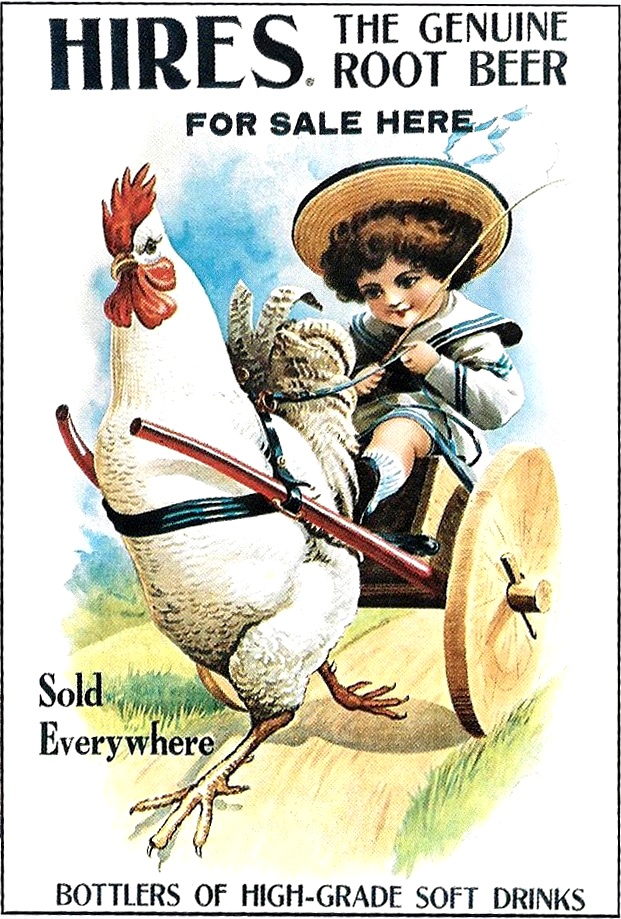
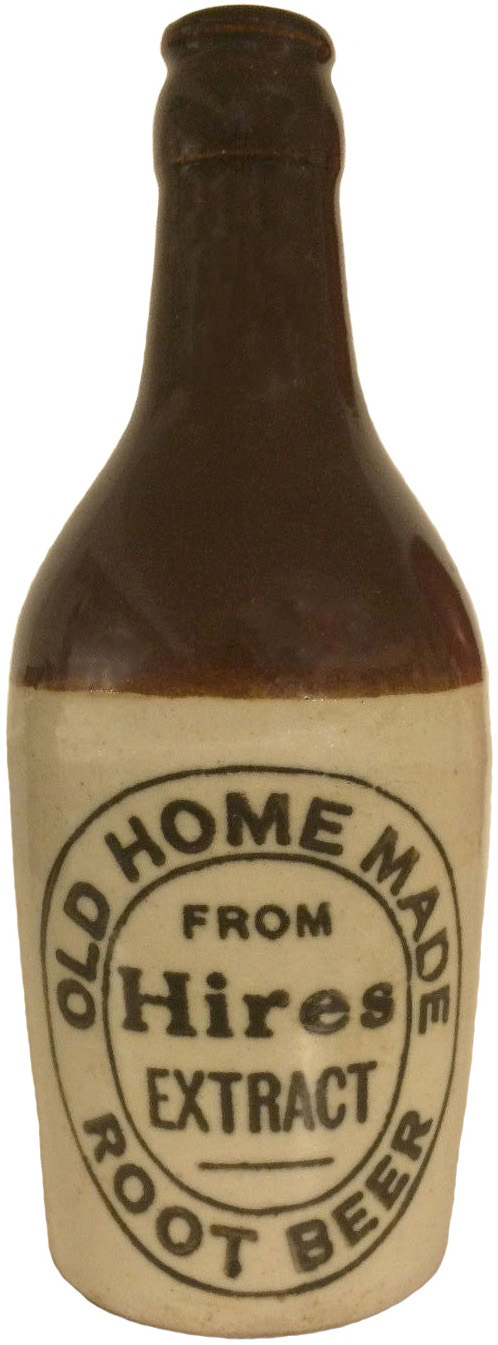
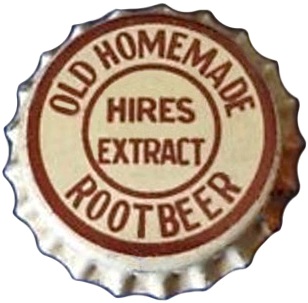
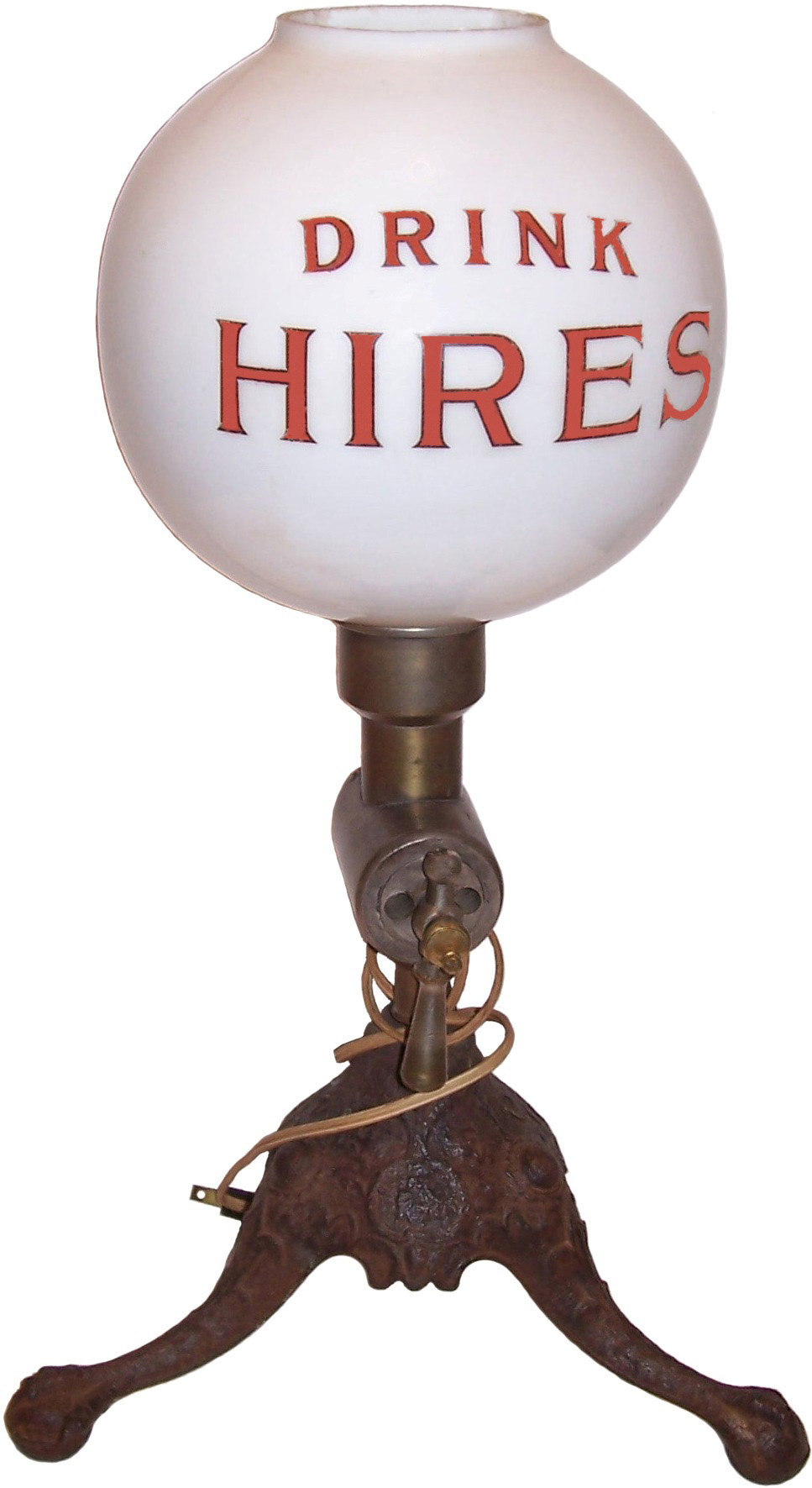

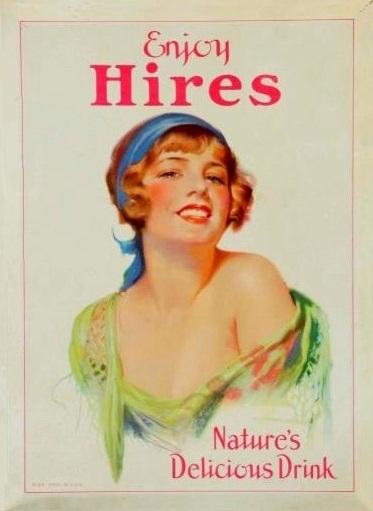

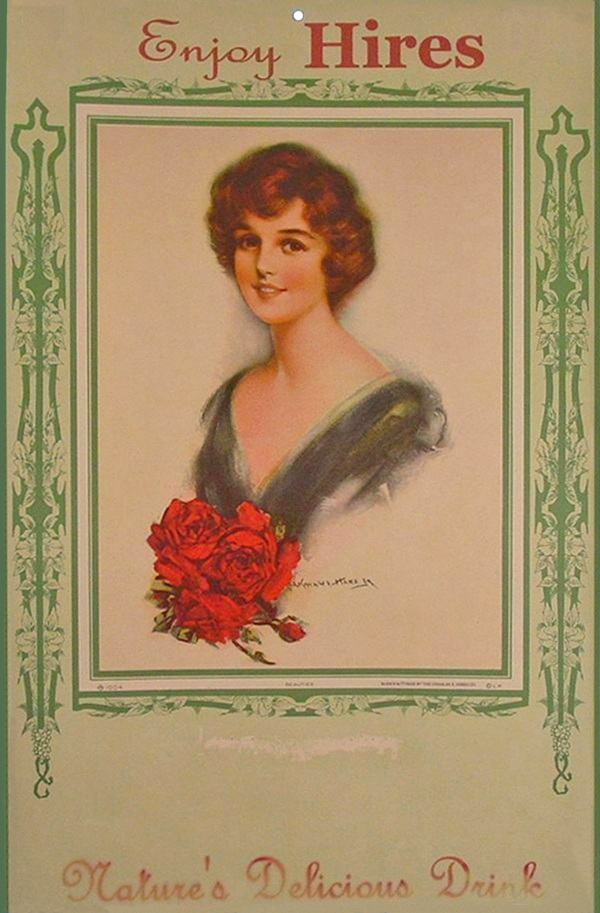
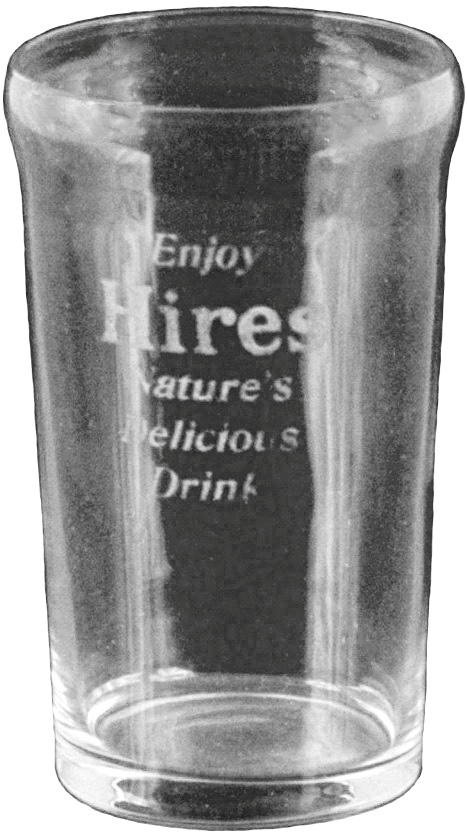
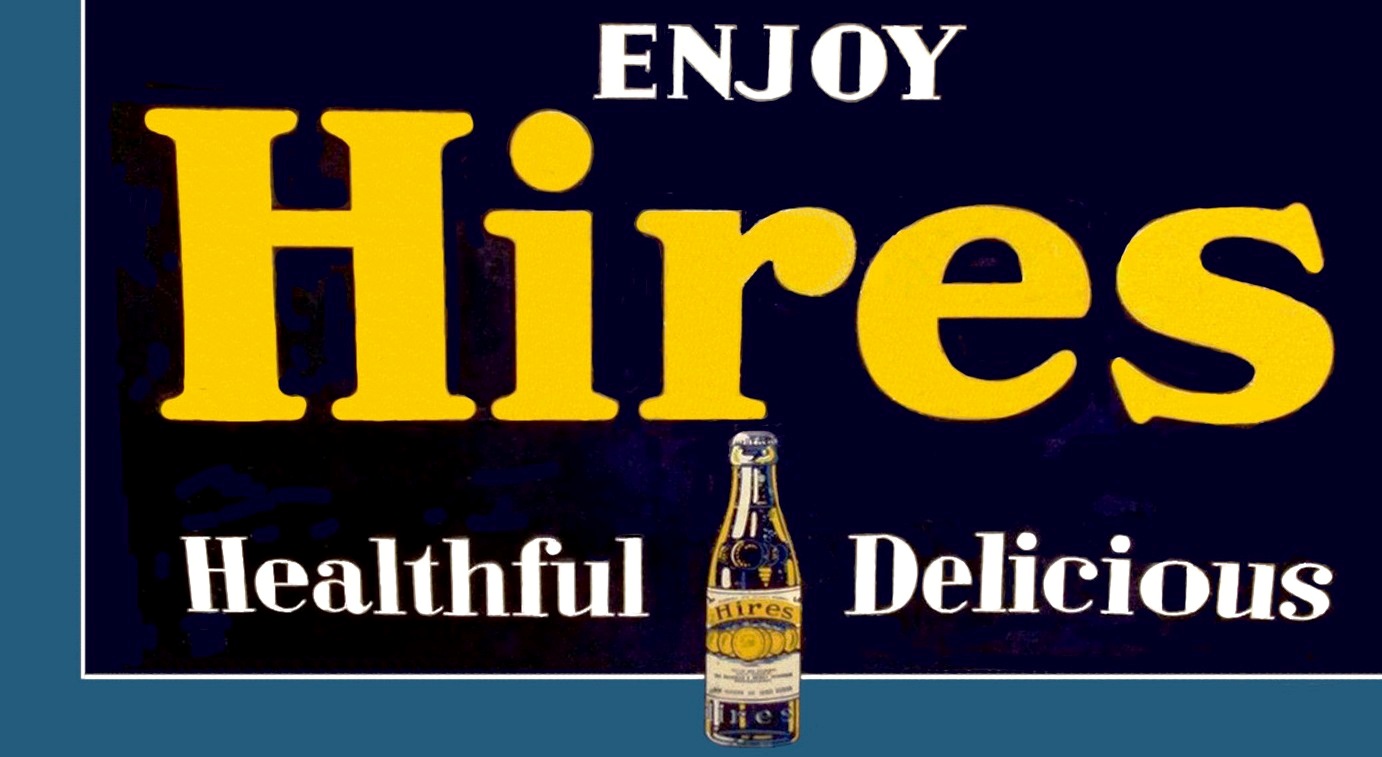

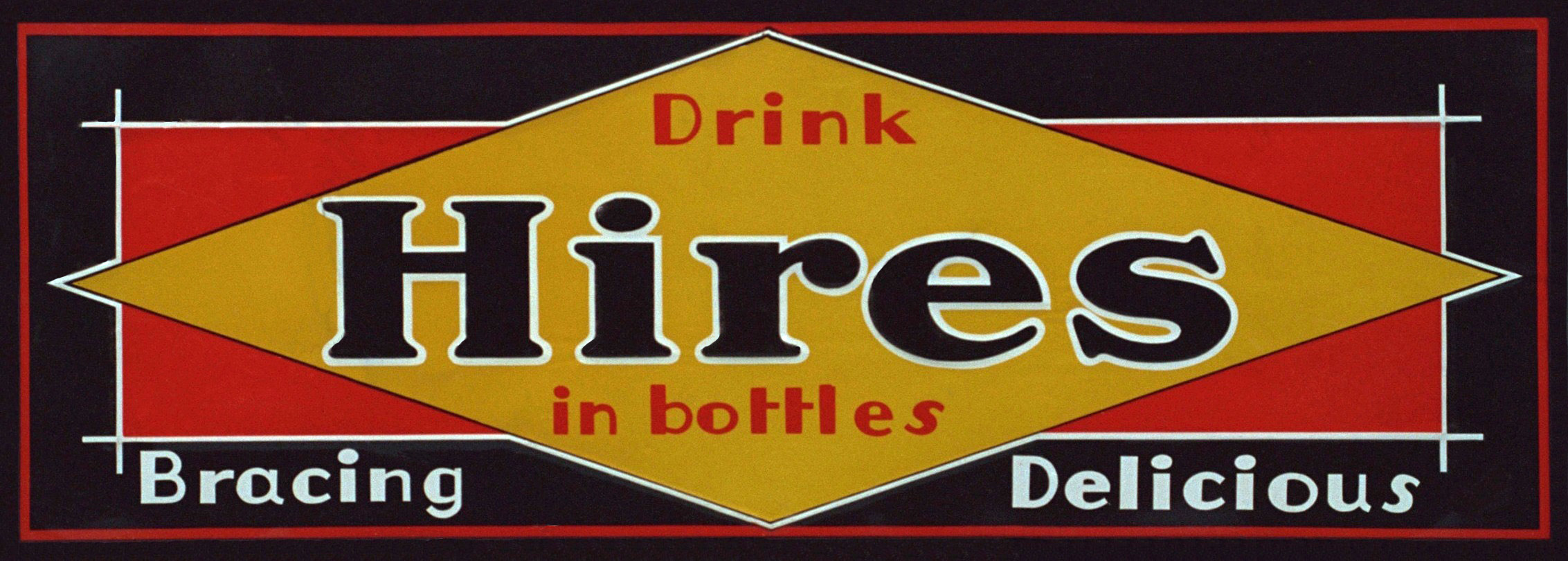
%20Delicious%20Bracing%20-%20tin%20sign%209.5%20x%2027.5.jpg)


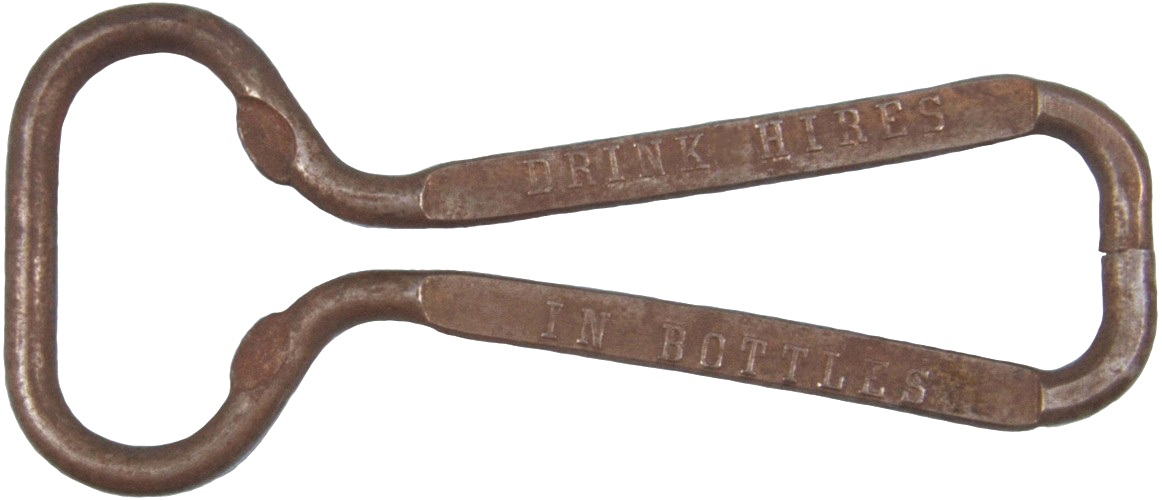

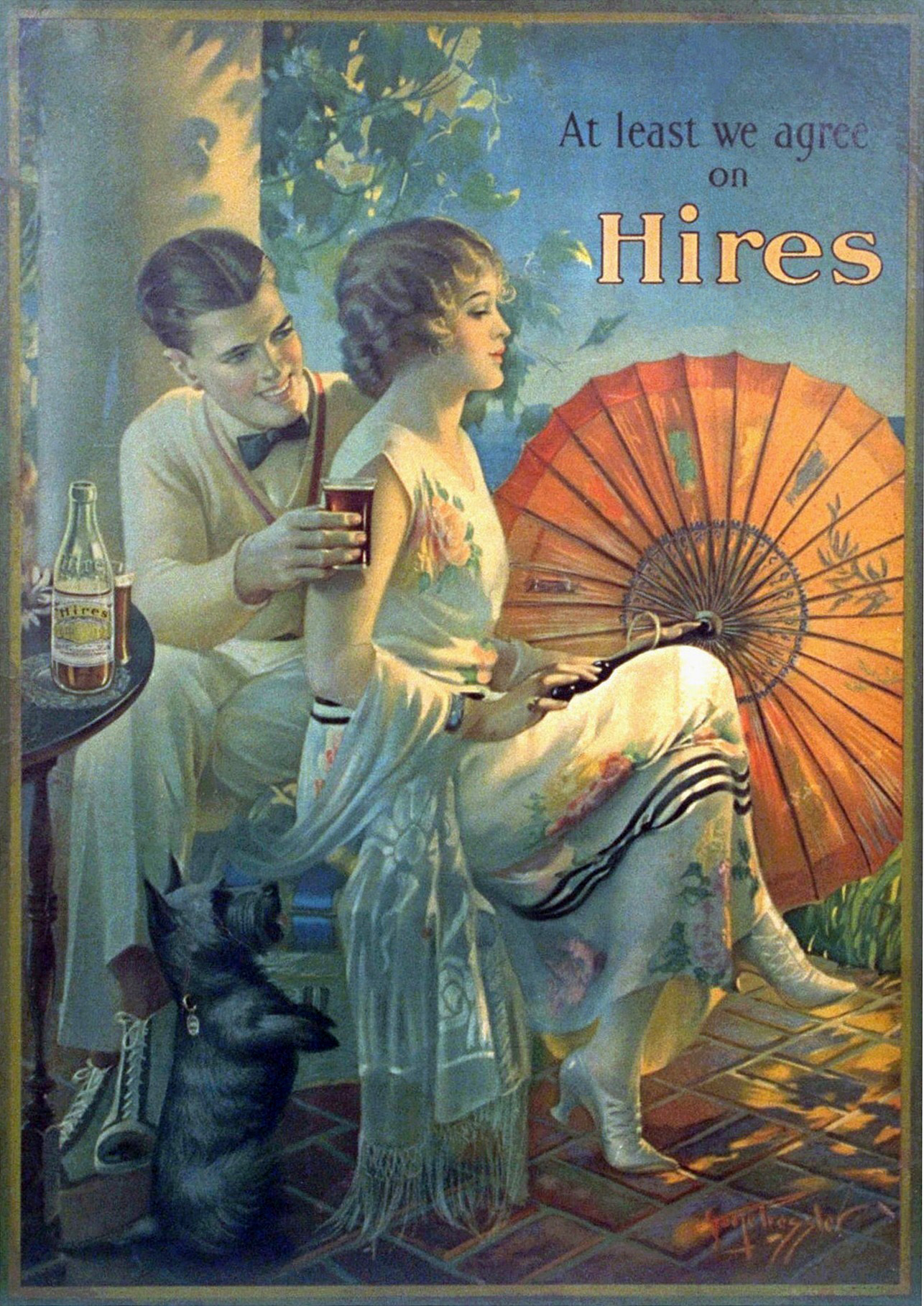
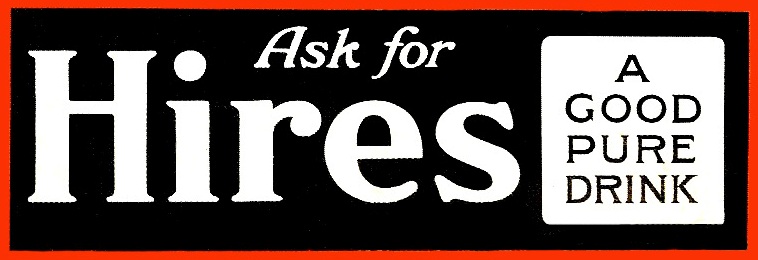
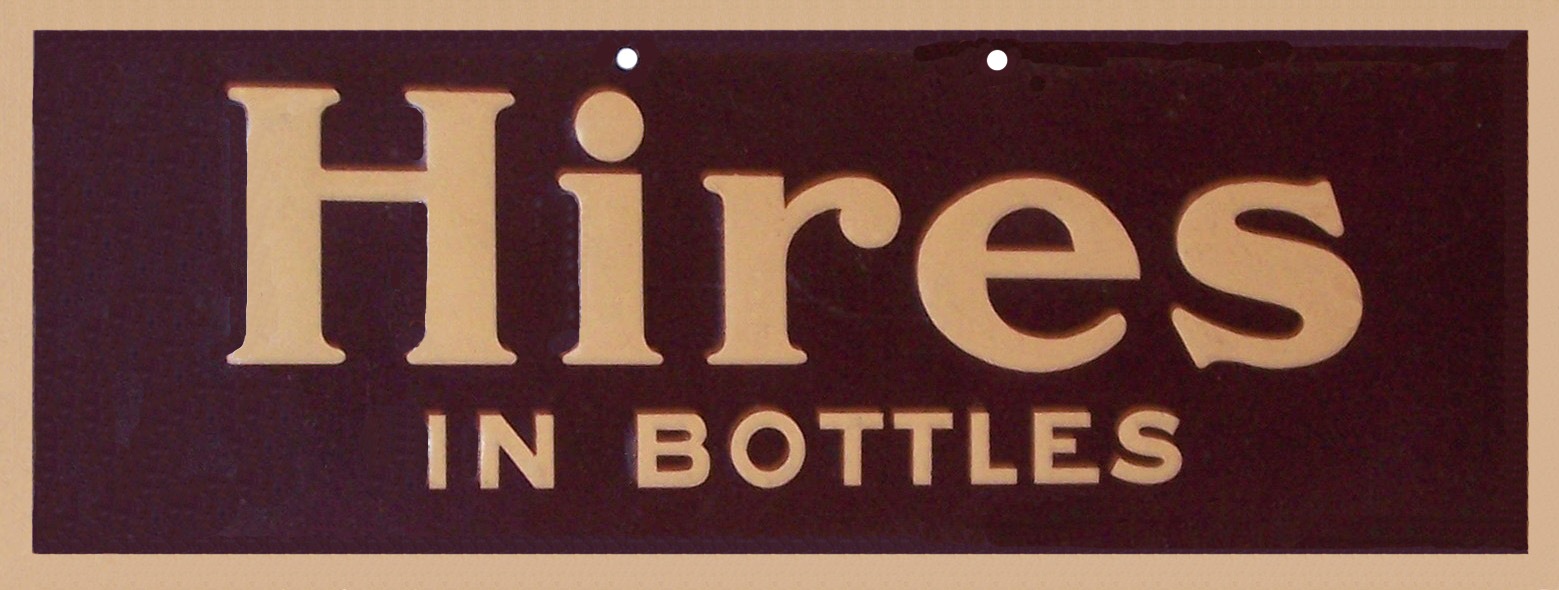
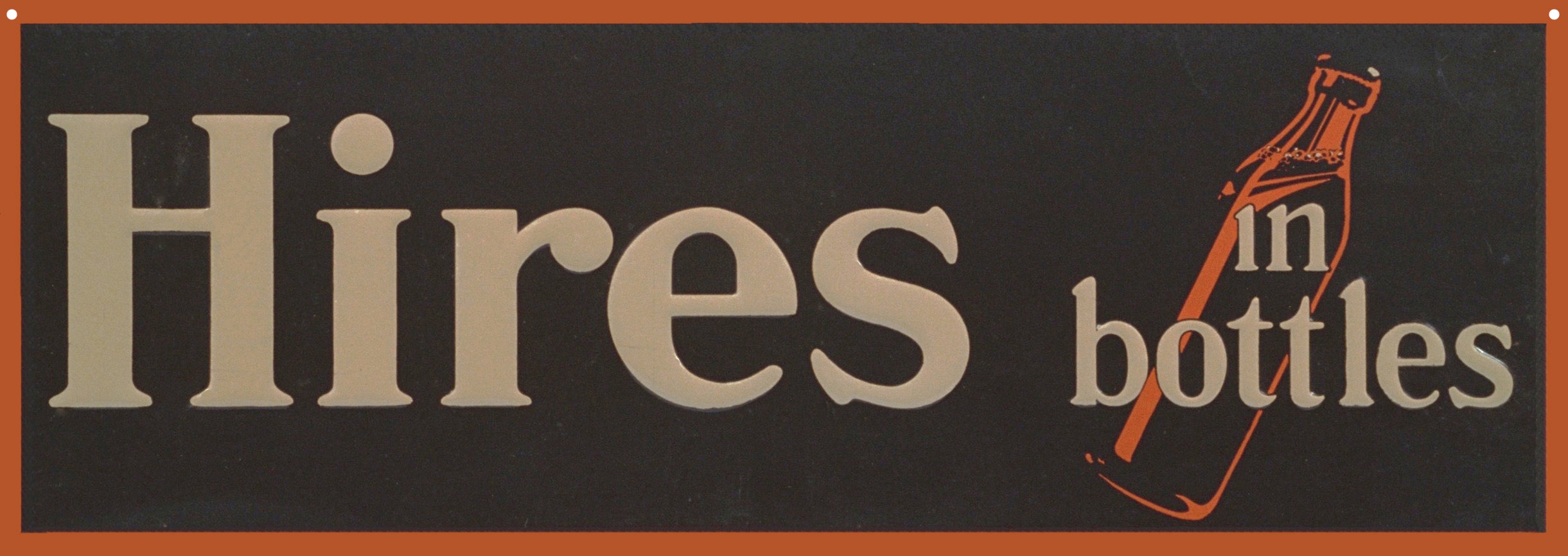
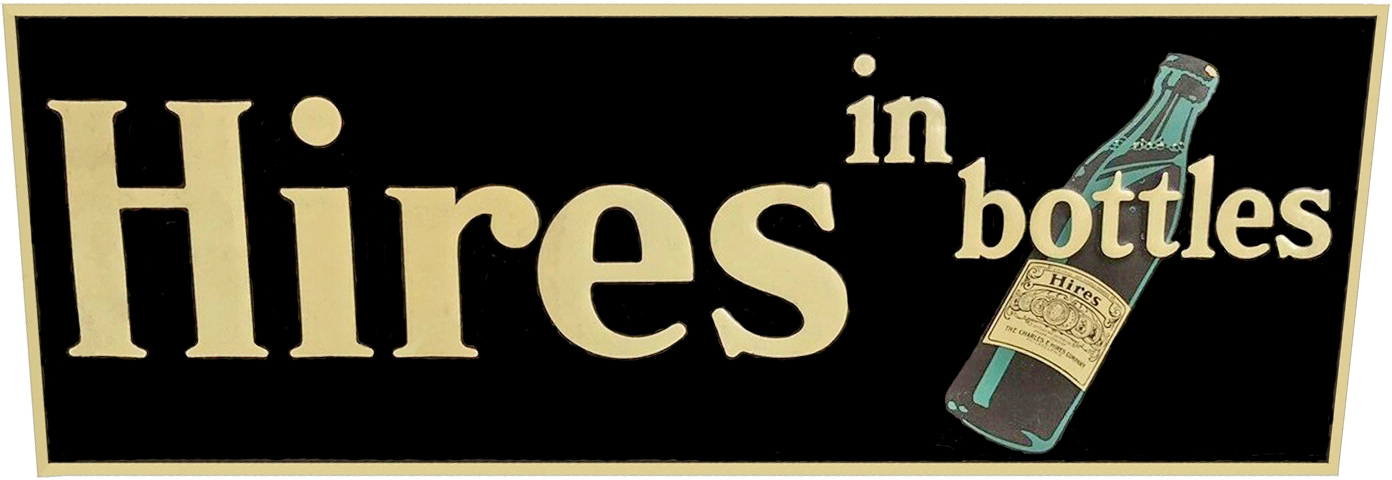
%20real%20photo%20postcard.jpg)
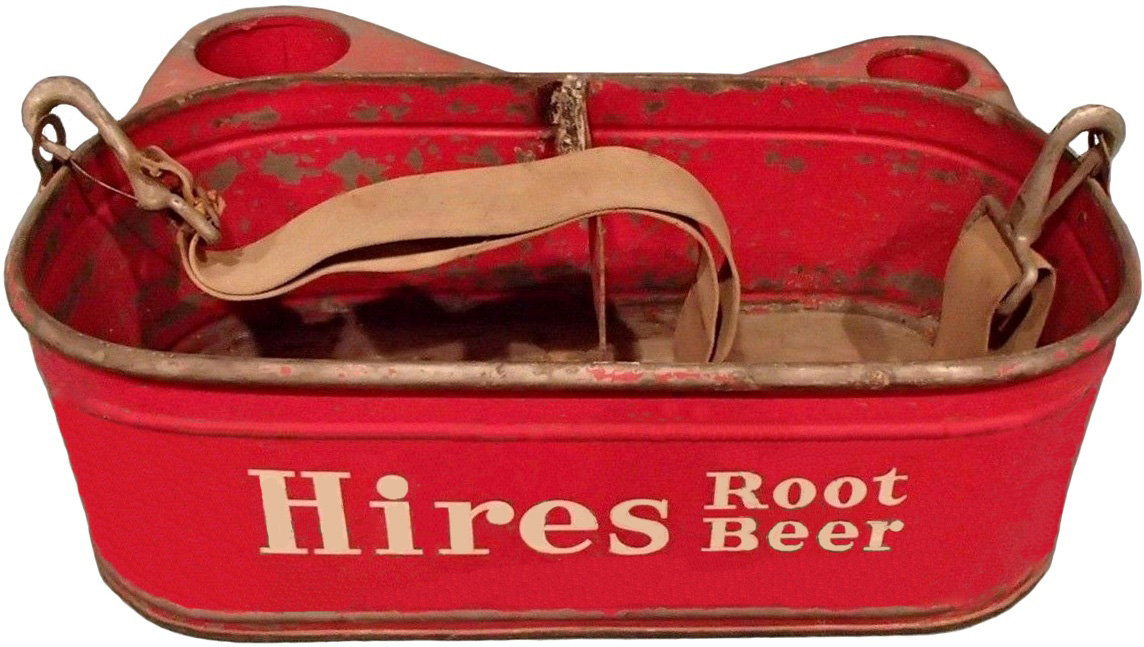

%20Root%20Beer%20-%20black%20letters%20on%20yellow%20embossed%20tin%20lithographed%20sign%20-%20possible%20fantasy%20or%20fake%20item.jpg)



